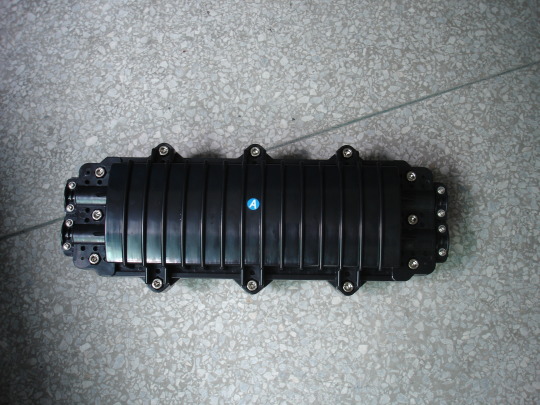#fiber splicer
Explore tagged Tumblr posts
Text
S3PS Telecom Versatile Color Fiber Optic Splice Protector with clear sleeve, steel rod for fiber optic connection, Spiral adhesive ,no adhesive at one end to lock the position, non-skid, pass the 10 cycles high and low temperature cycles, even the gasoline resistance version available.Kit includes Dome Closure Protection heat shrink tubing branch off clip,aluminum foil.
#upm heat shrink specialist#wire insulation#cable protection#shrink tubing#shrink sleeve#heat shrink#upmheat shrink#heat shrink tubing#shrink tube#fiber optic#fiber splicer#fiber protector#telecom#dome closure#fiber optic splice
1 note
·
View note
Text

✅Si estás interesado, envíame un mensaje directamente por Messenger. Los comentarios se ignoran fácilmente. ✅Si vous êtes intéressé, envoyez-moi un message directement via Messenger. Les commentaires sont facilement ignorés. ✅Se você estiver interessado, basta me enviar uma mensagem diretamente pelo Messenger. Comentários são facilmente ignorados. ✅إذا كنت مهتما فقط قم بمراسلتي مباشرة عبر الماسنجر. يتم تجاهل التعليقات بسهولة. ✅Bei Interesse schreibt mir einfach direkt über den Messenger eine Nachricht. Kommentare werden leicht ignoriert. ✅Если вам интересно, просто напишите мне напрямую через Messenger. Комментарии легко игнорировать. ✅اگر آپ دلچسپی رکھتے ہیں تو مجھے براہ راست میسنجر کے ذریعے میسج کریں۔ تبصروں کو آسانی سے نظر انداز کر دیا جاتا ہے۔ 📩Email: [email protected] 📞 Phone: +86 13824211741 🌐 Website: www.hzyht.com.cn
0 notes
Text

UPB bracket
Product Features:
1.Material:Aluminum alloy
2.Anti-corrosive
3.Good mechanical performance
4.Customized quantity,design
#fiber optics#opticalfiber#opticalfibersa1 fusion splicer#fiberoptic#optician#optical illusion#waterproofing
2 notes
·
View notes
Text

May the spirit of sacrifice guide us on the path of righteousness throughout this holy month and beyond.
Happy Muharram!
#Happy Muharram!#islamic new year#fiber splicing#optical splicing machine#ofc splicing machine#fusion splicer
0 notes
Text
Horizontal Fiber Optic Splice Closure#CH002
Specification:
1.Dimension: 450x175.8x106mm
2.Weight: 3.0kg
3.Cable diameter :Ф7-Ф18mm
4.Cable entry ports :Two cables entry ports on each end
5.Max. Capacity of fiber splice tray:5pcs (12 slots per tray)
6.Max. Capacity :60 fibers / 120 fibers (2 fiber per slot)
7.Sealing structure: Sticky cincture or silicon gum material


#fiber optic#fiber optic patch panel#fiber#fiber optic terminal box#drop cables#optical fiber communication#fusion splicer#fiberoptic#fttx
0 notes
Link
0 notes
Text
Are you ready to elevate your connectivity? At Business Communication Solutions, we specialize in fiber optic installation and repair services using our state-of-the-art fiber optic fusion splicer. Whether you need a single fiber strand repaired or require a comprehensive solution to connect multiple buildings, we've got you covered! Our team is dedicated to designing and installing the perfect system tailored to your business needs. Experience the speed and reliability of fiber optics—call us today to get started!
📞 Phone: +1 512-257-1433
📧 Email: [email protected]
🌐 Website: www.bcs-ip.com

0 notes
Text
FITEL S185, S185PM, S185ROF | Ring of Fire Fusion Splicer
Fia Optics offers the Ring of Fire fusion splicer, including FITEL S185, S185PM, and S185ROF models for precise and efficient fiber splicing in Washington DC.

#Ring of Fire in Washington DC#Ring of Fire Fusion Splicer in Washington DC#FITEL S185 in Washington DC#FITEL S185PM in Washington DC#FITEL S185ROF in Washington DC
0 notes
Text
Fiber Optics Course Explained: Master the Technology Powering Modern Communication Systems

In today's interconnected world, fiber optics plays a vital role in facilitating high-speed communication. From broadband internet to global telecommunications, fiber optics is the backbone of modern infrastructure. Understanding this technology is crucial for anyone pursuing a career in telecommunications, networking, or even emerging fields like data science and the Internet of Things (IoT).
What is Fiber Optics?
Fiber optics is a technology that transmits data as light pulses through glass or plastic fibers. Unlike copper cables, which rely on electrical signals, fiber optic cables use light, offering significant advantages in speed, bandwidth, and data transmission over long distances. This high-efficiency technology is used in many applications, from connecting continents through undersea cables to powering local broadband networks.
A fiber optics course typically begins with a foundational overview of this technology, introducing students to the basic concepts, physics, and principles governing light transmission.
Core Components of a Fiber Optics Course
A comprehensive fiber optics course covers several key topics, including:
1.Types of Fiber Optic Cables
Students will learn about the two primary types of fiber optic cables: single-mode and multi-mode.
- Single-mode fibers : These are typically used for long-distance communication. They have a smaller core diameter, which allows only one mode of light to pass through, reducing signal degradation over large distances.
- Multi-mode fibers : These are used for shorter distances, typically within local area networks (LANs). Their larger core diameter allows multiple modes of light to travel through, but they are more prone to signal distortion over long distances.
2.Fiber Optic Transmitters and Receivers
The course will also cover how data is transmitted and received in a fiber optic system. This process starts with a transmitter, usually a laser or LED, which converts electrical signals into light pulses. These light pulses are then transmitted through the fiber optic cable to a receiver, which converts them back into electrical signals. Understanding this conversion process is key to troubleshooting and maintaining fiber optic networks.
3.Splicing and Termination Techniques
Splicing refers to joining two fiber optic cables together, while termination is the process of adding connectors to the ends of the fiber. These skills are essential in practical applications, such as building networks or making repairs. Most courses will provide hands-on training in these techniques, including the use of fusion splicers and other tools.
4.Loss and Attenuation
One of the most critical challenges in fiber optics is signal loss, or attenuation, which can occur due to various factors such as cable length, bending, and impurities in the fiber. Courses will explain how to measure, minimize, and manage loss using techniques like signal boosting and error correction. Understanding how to reduce attenuation ensures the efficiency and reliability of fiber optic networks.
5.Testing and Maintenance
Regular testing is a crucial part of maintaining fiber optic systems. Students will learn how to use optical time-domain reflectometers (OTDRs) and other specialized tools to diagnose problems and ensure the proper functioning of a fiber optic network. A course will also cover safety protocols, as working with fiber optics involves handling delicate materials and high-intensity light sources.
Practical Applications of Fiber Optics
- Telecommunications : Fiber optics is the foundation of modern telecommunications networks. It provides the high bandwidth and low latency needed for long-distance phone calls, internet, and TV services.
- Data Centers : With the increasing demand for cloud computing and data storage, data centers rely on fiber optics for high-speed connections between servers, storage devices, and users.
- Medical Industry : In medicine, fiber optics is used in imaging equipment like endoscopes. These devices allow doctors to see inside a patient’s body without invasive surgery, improving diagnostics and treatment.
- Military and Aerospace : The high security and reliability of fiber optic communication make it ideal for military applications, including secure communication and navigation systems in aircraft and submarines.
Conclusion
A fiber optics course provides a comprehensive education on the principles, applications, and skills needed to work in this high-demand field. By mastering fiber optics, you will not only gain technical proficiency but also position yourself for a career at the heart of modern communication systems. Whether you are looking to build or maintain networks, troubleshoot technical issues, or develop innovative solutions, fiber optics knowledge is a crucial asset in today’s technology-driven world.
0 notes
Text
Fiber optic fusion splicers are essential tools used in telecommunications and networking to join optical fibers through fusion, ensuring minimal signal loss. By aligning fiber cores with precision and melting them using an electric arc or laser, these splicers create low-loss, reliable connections critical for high-speed data transmission in telecommunication networks, internet infrastructure, and cable TV systems. Known for their precision and efficiency, fusion splicers have evolved to become more compact, faster, and user-friendly, enabling effective deployment and maintenance of modern fiber optic networks.
0 notes
Text
Becoming a Fibre Splicing Expert: Courses and Training Programs in Australia
Fibre splicing is an essential skill in the telecommunications industry, especially with the increasing demand for high-speed internet and data connectivity. If you’re interested in becoming a fibre splicing expert in Australia, there are various courses and training programs available to help you acquire the necessary skills and knowledge.
One of the popular options is the Certificate III in Fibre Optics offered by TAFE (Technical and Further Education) institutions across Australia. This course covers topics such as fibre optic theory, installation, and splicing techniques, as well as health and safety requirements.
Another option is the Certified Fibre Optic Technician (CFOT) program offered by the Fiber Optic Association (FOA). This program is globally recognized and covers the fundamentals of fibre optics, splicing, and testing techniques. The CFOT program is available through FOA-approved training providers in Australia.
In addition, some private training providers offer specialized courses in fibre splicing, such as the Fibre Optic Splicing and Testing course offered by Milcom Institute in Sydney. This course covers various splicing techniques, including fusion splicing and mechanical splicing, as well as testing and troubleshooting techniques.

To become a fibre splicing expert, it’s essential to gain practical experience through on-the-job training or apprenticeships. Many telecommunications companies offer apprenticeships for fibre splicers, which provide hands-on training and experience.
There are many options available for those looking to become fibre splicing experts in Australia. It’s essential to choose a course or training program that suits your career goals and interests, and provides the necessary skills and knowledge to succeed in this field.
Exploring the Different Techniques of Fibre Splicing Taught in Australian Training Programs
Fibre splicing is the process of joining two or more fibre optic cables together to create a continuous pathway for data transmission. There are several techniques of fibre splicing, and Australian training programs cover the various methods and their applications. Below are some of the techniques taught in fibre splicing courses in Australia:
Fusion Splicing: This is the most common technique of fibre splicing and involves melting two fibre optic cables together using an electric arc. The melted ends of the cables are then fused together, creating a seamless connection. Fusion splicing is ideal for long-distance telecommunications applications and provides low insertion loss and high tensile strength.
Mechanical Splicing: This technique involves joining two fibre optic cables using a mechanical splice. A mechanical splice is a small device that clamps the two cables together and aligns the fibre cores, allowing light to pass through. Mechanical splicing is faster and less expensive than fusion splicing but provides higher insertion loss and lower tensile strength.
Ribbon Splicing: Ribbon splicing is a variation of fusion splicing that involves splicing multiple fibre optic cables at the same time. The cables are aligned side-by-side, and the fibres are melted together using an electric arc. Ribbon splicing is faster than splicing individual fibres and is commonly used in high-density installations.
Mass Fusion Splicing: Mass fusion splicing is a technique used for joining multiple fibre optic cables at once. This is achieved by fusing the fibres using a specialised splicer machine. This technique is used in high-density installations and is faster than ribbon splicing.
Core Alignment Splicing: Core alignment splicing is a technique that involves aligning the fibre cores before splicing. This is achieved using a camera system that ensures the cores are aligned accurately. This technique is commonly used in long-distance telecommunications applications where low insertion loss is critical.
Fibre splicing courses in Australia cover a range of techniques and applications, providing students with the necessary skills and knowledge to succeed in this field. Choosing the right technique for a specific application depends on several factors, including the type of installation, distance, and required performance characteristics.
Visit us for more information :- structured cabling course
Career Opportunities for Fibre Splicers in Australia: Job Outlook and Salary Expectations
Fibre splicers play a critical role in the telecommunications industry in Australia, ensuring the reliable and efficient transmission of data through fibre optic cables. As such, there is a high demand for skilled fibre splicers, with strong job prospects and competitive salaries.
The job outlook for fibre splicers in Australia is positive, with the industry expected to continue to grow in the coming years. The NBN (National Broadband Network) rollout, in particular, has created a significant demand for fibre splicers to install and maintain fibre optic cables across the country.
Fibre splicers can find employment in a range of sectors, including telecommunications, data centres, and electrical contracting companies. Some may also work as independent contractors or consultants, providing fibre splicing services on a project-by-project basis.
According to data from PayScale, the average salary for a fibre splicer in Australia is around AU$68,000 per year. However, salaries can vary depending on factors such as experience, location, and employer. In some cases, fibre splicers may earn significantly more, particularly those with specialist skills or experience in high-demand areas.
In addition to competitive salaries, fibre splicers may also enjoy a range of benefits, including flexible work arrangements and opportunities for career progression. Many telecommunications companies offer training and development programs to help their employees acquire new skills and advance in their careers. Overall, the career opportunities for fibre splicers in Australia are promising, with strong job prospects and competitive salaries. Those interested in this field should consider pursuing formal training and gaining practical experience to maximize their employment opportunities and potential earnings.
0 notes
Text

Fiber optic terminal box
#fiber optics#opticalfiber#opticalfibersa1 fusion splicer#optician#fiberoptic#optical illusion#waterproofing
2 notes
·
View notes
Text
Deviser Power Meter Ae270 for FTTx
The Deviser AE270 Power Meter is the perfect solution for FTTx deployments, providing precise measurements essential for fiber optic networks.
With its intuitive interface and high accuracy, it simplifies power monitoring tasks, ensuring optimal performance and reliability. Trust the Fiber Optic fiber tester AE270 for accurate measurements and seamless FTTx operations.

#fusion splicing machine#optical splicing machine#fusion splicer#otdr machine#fiber joint machine#sumitomo splicing machine
1 note
·
View note
Text

OTB-C04-F and OTB-C04-A comparison chart
#fttx#fiber optic#optical fiber communication#drop cables#fibreoptique#fusion splicer#fiber#fiberoptic
0 notes
Text
0 notes